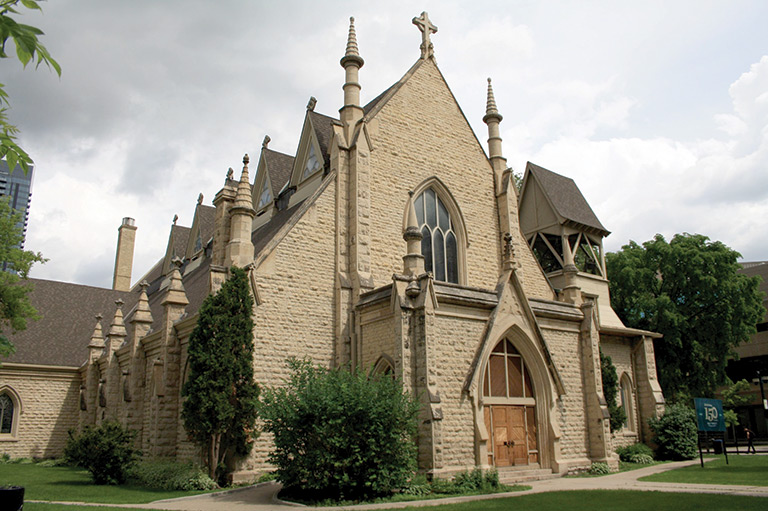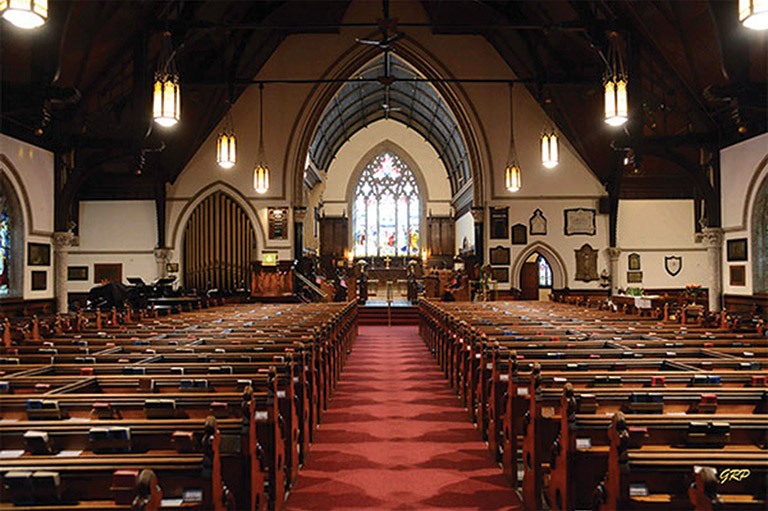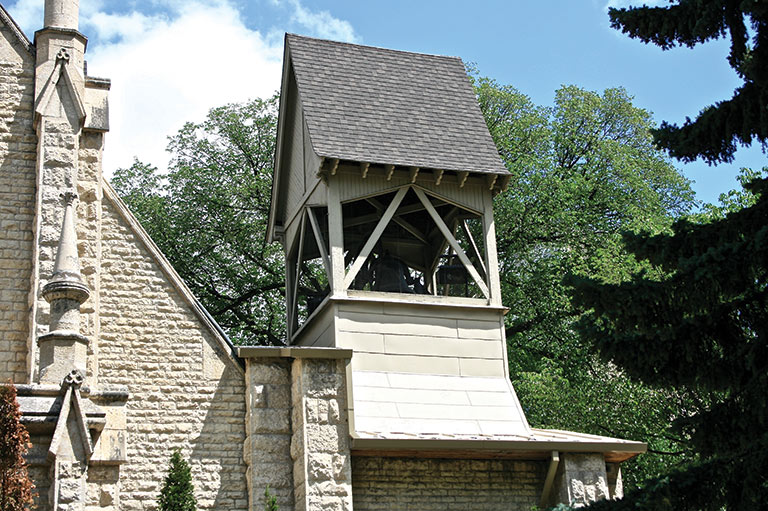Shaky Foundations

When people gathered on August 13, 1883, to watch the laying of the cornerstone for Holy Trinity Anglican Church, the site instantly became a symbol of hope and inspiration for the young city of Winnipeg.
With a population of about sixteen thousand, the city was growing quickly. Just ten years earlier, when it was incorporated as a city, Winnipeg wasn’t much more than a frontier outpost, “a group of wood shacks at the forks of two rivers,” says architect Brent Bellamy, creative director for Number Ten Architectural Group in Winnipeg.
“And literally not even a decade after, we were building one of the great Gothic buildings in the entire country, celebrated as one of the great Gothic achievements in Canada.”

The grand place of worship, with seating for eight hundred parishioners, was expected to stand for centuries, just like many of the fine old churches of Europe. But that prospect is now fading quickly as cracks, falling plaster, and heaving floors become an increasing concern.
Its tiny congregation of less than a hundred was recently reminded of a sobering truth: “Since the late 1980s, this parish has operated with the knowledge that major repairs to build a foundation under the historic church would be necessary to avoid a collapse,” states Holy Trinity’s 2023 annual report. “It is still not clear when, exactly, that collapse will occur, but signs of structural distress continue to present themselves with increasing urgency.”
Bellamy says the downtown church, like other buildings of its time, was built on a type of foundation known as a strip footing and has no basement.
Winnipeg is “a subarctic city, the ground heaves and moves,” Bellamy explains. “At some point, all buildings, especially ones that weigh that much … they begin to have differential movement in them.”

From an engineering perspective, stabilizing the church’s structure is straightforward, Bellamy says. However, the work could cost $7 million — money the church doesn’t have. Bishop Geoff Woodcroft of the Anglican Diocese of Rupert’s Land has said the building may be sold if the church can find a buyer willing to maintain the historic structure and to keep space available for worship services and mission work.
Holy Trinity is a National Historic Site and a protected municipal historical building. The possibility of losing the church horrifies Cindy Tugwell, the executive director of Heritage Winnipeg, who says each generation has a responsibility to act as stewards of historical buildings.
“That would be a massive loss,” Tugwell says.
“You go to a city … the buildings tell the story of who the city is, and how they developed, and what they did, and why they did. Without that, you’re a soulless city.”
With 7 uniquely curated newsletters to choose from, we have something for everyone.
We hope you’ll help us continue to share fascinating stories about Canada’s past by making a donation to Canada’s History Society today.
We highlight our nation’s diverse past by telling stories that illuminate the people, places, and events that unite us as Canadians, and by making those stories accessible to everyone through our free online content.
We are a registered charity that depends on contributions from readers like you to share inspiring and informative stories with students and citizens of all ages — award-winning stories written by Canada’s top historians, authors, journalists, and history enthusiasts.
Any amount helps, or better yet, start a monthly donation today. Your support makes all the difference. Thank you!
Themes associated with this article
Advertisement
Save as much as 40% off the cover price! 4 issues per year as low as $29.95. Available in print and digital. Tariff-exempt!




